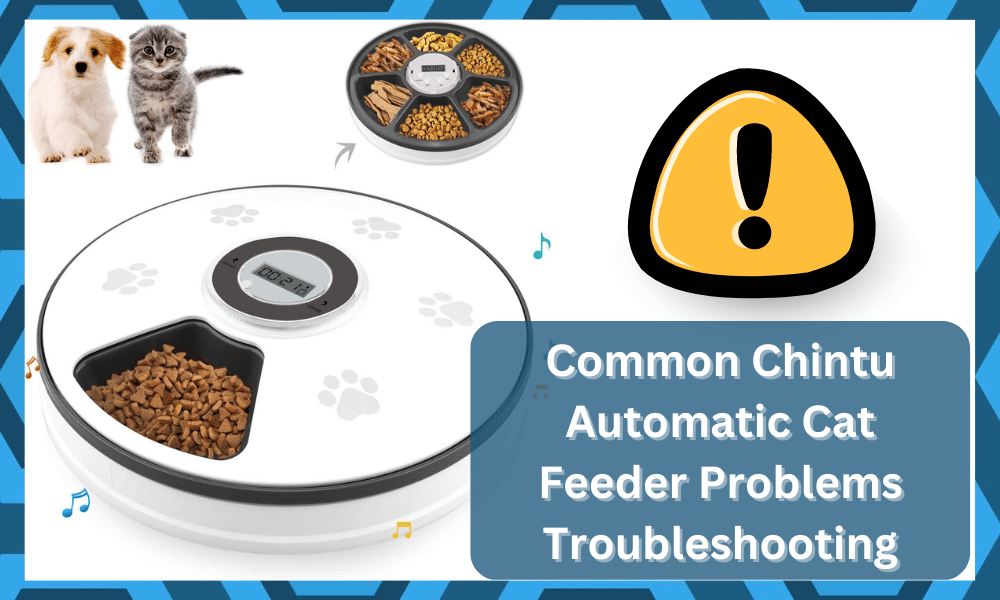Introduction
Picture this: it’s a sunny Saturday morning, and you’re all set to enjoy a leisurely brunch while your furry friend munches away at their scheduled meal from the automatic cat feeder. But wait—what’s this? Your cat is staring at the feeder like it just told them the world is flat. Automatic cat feeders can be a lifesaver for busy pet owners, but they come with their own set of challenges.

In this article, we're diving into the common issues with automatic cat feeders and how to fix them, ensuring your feline friend never goes hungry again. From malfunctions to troubleshooting tips, we’ll cover everything you need to know to keep your feeder in tip-top shape. Let’s get started!

1. Automatic Cat Feeder Not Working Properly? Here’s Why!
If your automatic cat feeder has suddenly decided to take a vacation instead of dispensing food, you’re not alone. Many pet parents face this issue, and it can often be traced back to a few common culprits:
-
Power Source Problems: Check if it's plugged in! If it runs on batteries, make sure they’re fresh. Trust me, a dead battery can turn your cat’s dinner into a dramatic event.
-
Jammed Mechanism: Food can sometimes get stuck, causing the feeder to malfunction. Open it up, and give it a good clean. You might find kibble wedged in unexpected places!
-
Programming Errors: It’s easy to misprogram the feeder. Double-check the settings to ensure it’s set to dispense at the right times.
A quick fix example: one user found that simply cleaning the feeding chute resolved their feeder issues. After a good scrub, it was back to business, serving up meals like a pro!
2. How to Fix Automatic Cat Feeder Malfunctions
If you’re feeling more like a cat detective than a pet owner, don’t fret! Let's troubleshoot those pesky malfunctions. Here are the steps to follow:
-
Reset the Device: Sometimes, all it takes is a little reset. Turn it off, unplug it, wait a minute, and then plug it back in. Voila! Your feeder might just spring back to life.
-
Check the Food Type: Not all feeders are created equal. Ensure you’re using the right type of food. Some feeders can’t handle wet food or larger kibble. Stick to the manufacturer’s recommendations.
-
Inspect Sensor and Components: Look for any visible damage or misalignment in the parts. Sometimes, sensors can be finicky. A gentle adjustment may be all it needs.
A fascinating statistic to consider: according to a survey from Pet Product News, nearly 30% of pet owners have experienced issues with their automatic feeders. But hey, now you’re armed with solutions!

3. Best Solutions for Automatic Cat Feeder Problems
If your feeder continues to give you trouble, it might be time to look at some more permanent solutions. Here are some recommendations to keep your kitty fed without the hassle:
-
Upgrade Your Feeder: If your current model feels more like a burden than a blessing, consider upgrading to a more reliable model. Look for reviews highlighting durability and ease of use.
-
Invest in a Feeder with Backup Features: Some modern feeders come equipped with backup power options (like battery operation) and remote control features. This way, even if the power goes out, your cat’s meals are still covered!
-
Routine Maintenance: Just like your car, your cat feeder needs some TLC too! Regularly clean and inspect it to avoid buildup and malfunctions.
Did you know that smart feeders can be controlled via an app? This means you can monitor feeding times and portions right from your phone. Talk about a modern-day pet parent!

4. Automatic Cat Feeder Troubleshooting Guide
Want to become a whiz at troubleshooting? Here’s a handy guide you can bookmark for future reference:
- Check Power Supply: Ensure it’s plugged in or change the batteries.
- Inspect Food Dispensing Mechanism: Clean any jams or stuck food.
- Verify Settings: Make sure times and portions are correctly programmed.
- Look for Physical Damage: Check for cracks or misalignments in the feeder.
- Consult the Manual: When in doubt, refer back to the manufacturer's guide.
Utilizing this guide can save you time and prevent unnecessary stress. Remember, your cat’s dinner is at stake, and they won’t let you forget it!
Conclusion
Automatic cat feeders are a fantastic tool for pet owners, but they’re not without their challenges. Whether it’s a simple jam or a more complex malfunction, knowing how to troubleshoot these common issues can save you a lot of headaches.
With the tips and tricks in this article, you’re now equipped to tackle any automatic cat feeder problem that comes your way. So, go ahead—enjoy your brunch, knowing that your feline friend is well taken care of. If all else fails, don’t hesitate to reach out for professional help or consider investing in a new model that suits your needs better.
Happy feeding! 🐾